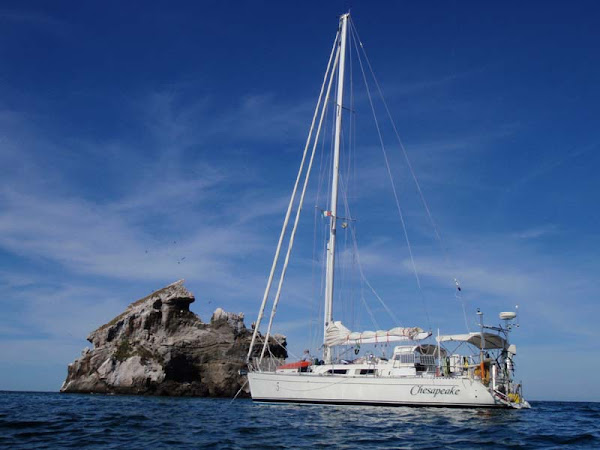 one of the stelae loaded with hieroglyphic metaphores - the square knot near the top indicates the ruler is getting old and will be handing his power over to his son (one of the few details i actually remembered!)
one of the stelae loaded with hieroglyphic metaphores - the square knot near the top indicates the ruler is getting old and will be handing his power over to his son (one of the few details i actually remembered!) a large serpent statue
a large serpent statue view of the Central Plaza - the ball court (2nd largest in Central America) and the Hieroglyphic Stairway which is covered by a tarp for protection. Apparently the captain of the losing team was beheaded after the game
view of the Central Plaza - the ball court (2nd largest in Central America) and the Hieroglyphic Stairway which is covered by a tarp for protection. Apparently the captain of the losing team was beheaded after the game one of the stelae covered in hieroglyphics giving a pictoral history
one of the stelae covered in hieroglyphics giving a pictoral history the wild macaws in flight
the wild macaws in flightSo after our "big adventure" into San Salvador we decided to hire a tour guide with 2 other cruiser couples (Max and Sandy on Volo and Brian and Terri on Traveller). In 3-days 2-nights Jorge drove us across El Salvador to Joya de Ceren, San Andres, Santa Ana and finally into Copan where we spent the night. The next day we toured the Copan archiological Ruinas and arrived in Antigua, Guatemala in the evening. The third day we took a tour of one of the convents. Well, actually they did the tour while I shopped for huipiles. We arrived back at the marina just after dark the third day. We all agreed it was an amazing tour, Jorge was a terrific guide and it felt like traveling with family (in a good way). I would definitely recommend Jorge for anyone wanting to tour any of these countries. http://www.tourinelsalvador.com/. We learned a lot about the culture and the history and he's passionate about making El Salvador a place to visit.
I was particularly impressed with the ruines outside Copan. It was a photographer's paradise and I have a zillion pictures to show but will only post a few here. You can check the shutterfly photo blog for the rest. Here's a brief overview of the information I came away with. Oh and I should mention while we were there a flock of wild macaws were flying back and forth in the trees. It's the first time I've ever seen them in the wild and it was heart-stopping. Okay on to the background info:
Copan ruinas culturally dominated the region for centuries producing sculptures and hieroglyphics – called the Paris of the Mayan world. Since 1200 BC crafts and trade thrived. About 426 AD the royal family began its rule. Not much info about the early kings but they sure have colorful names: Mat Head, Waterlily Jaguar, Moon Jaguar, Smoke Jaguar, 18 Rabbit, Smoke Monkey, and Smoke Shell. 18 Rabbit commissioned many of the sculptures saw on our tour. He was quite a military conqueror but lost his head (literally) in the end. Once Smoke Monkey came into power things began to decline. His son, Smoke Shell, built the ir most important monument, the great Hieroglyphic Stairway immortalizing achievements of the dynasty bearin the longest inscription ever discovered in the Maya kingdom. Archeologists are still debating what happened to end this dynasty but currently it’s believed the increased population strained the valley’s agricultural resources. As the residents expanded out and up the steep slopes, deforestation caused erosion lowering aricultural production and causing floods during rains. This lead to more diseases so people died younger. With fewer people living in the area the jungle soon took over as you can see from the trees sprouting all over the place. Most of the trees I'm told are only 70-80 years old!
Copan ruinas culturally dominated the region for centuries producing sculptures and hieroglyphics – called the Paris of the Mayan world. Since 1200 BC crafts and trade thrived. About 426 AD the royal family began its rule. Not much info about the early kings but they sure have colorful names: Mat Head, Waterlily Jaguar, Moon Jaguar, Smoke Jaguar, 18 Rabbit, Smoke Monkey, and Smoke Shell. 18 Rabbit commissioned many of the sculptures saw on our tour. He was quite a military conqueror but lost his head (literally) in the end. Once Smoke Monkey came into power things began to decline. His son, Smoke Shell, built the ir most important monument, the great Hieroglyphic Stairway immortalizing achievements of the dynasty bearin the longest inscription ever discovered in the Maya kingdom. Archeologists are still debating what happened to end this dynasty but currently it’s believed the increased population strained the valley’s agricultural resources. As the residents expanded out and up the steep slopes, deforestation caused erosion lowering aricultural production and causing floods during rains. This lead to more diseases so people died younger. With fewer people living in the area the jungle soon took over as you can see from the trees sprouting all over the place. Most of the trees I'm told are only 70-80 years old!





No comments:
Post a Comment